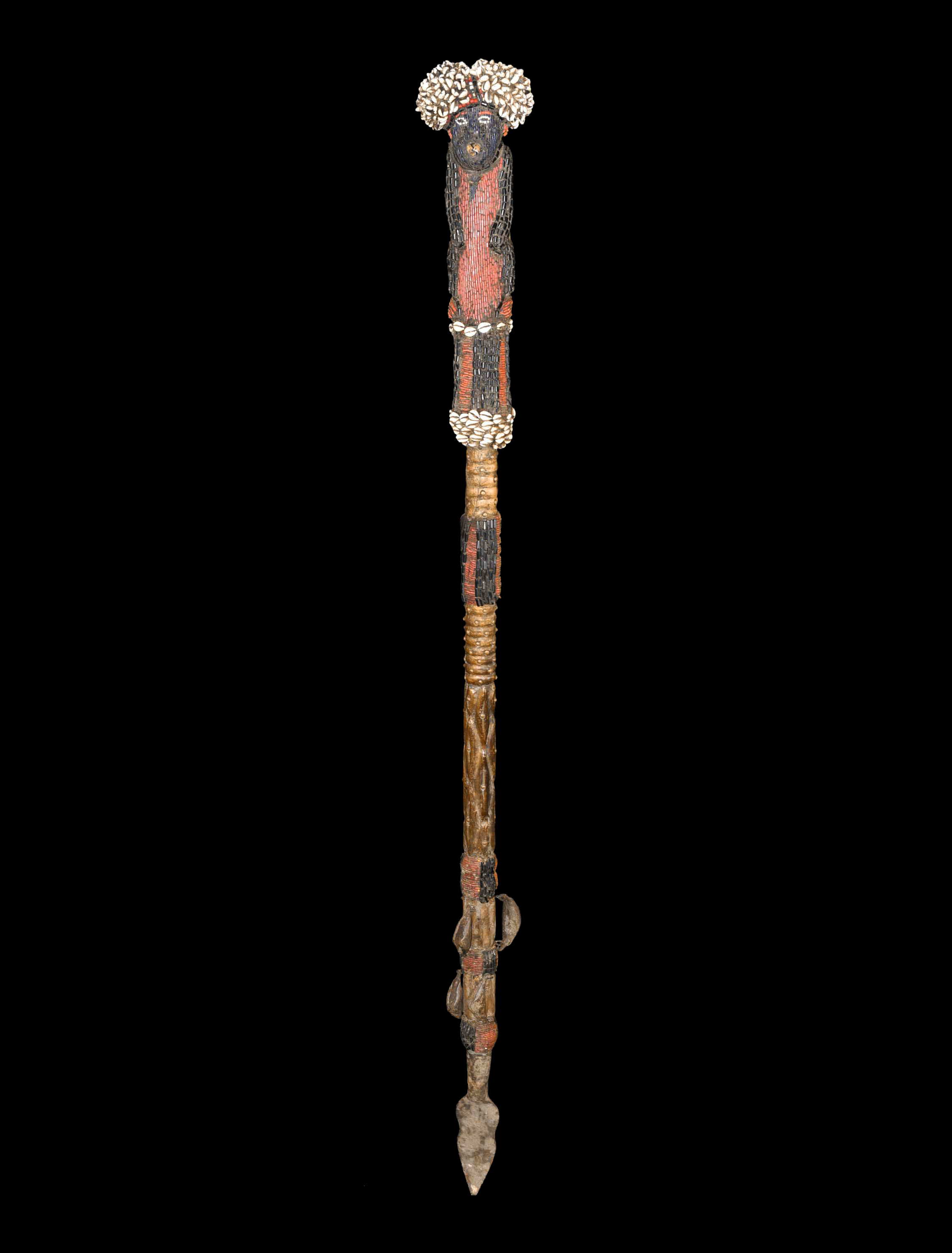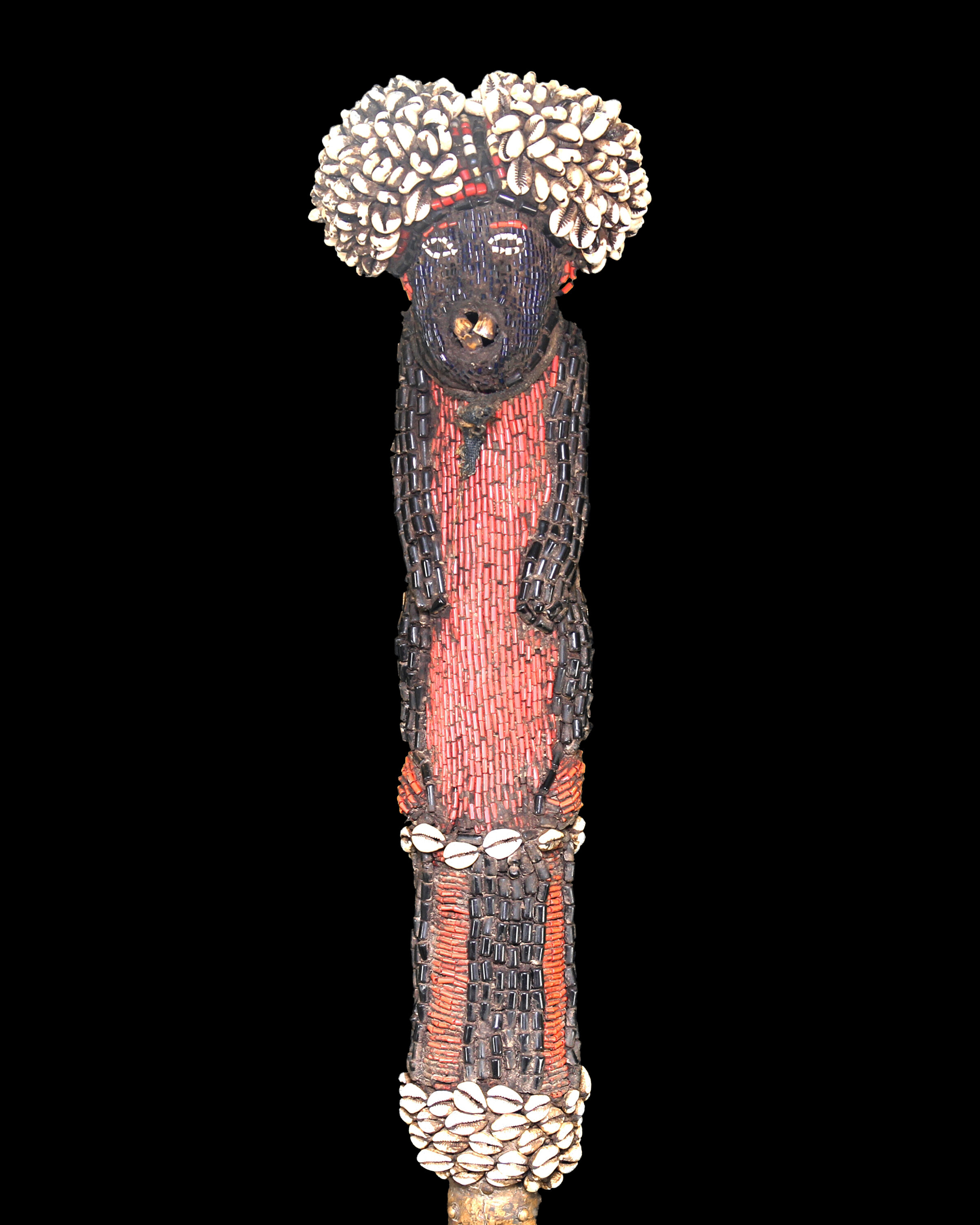The Royal Destitution Cane traditionally played an important role in maintaining order and stability in the Bamoun kingdom. The cane provided a ritualistic means for the king to banish any community member—near or far—from his kingdom for a crime or offense against the royal order. Punishable abuses included committing adultery with one of the king’s wives, contravening laws and regulations established by the king, theft, complicity in seizing the land of another villager, or any number of other acts that challenged established customs.
Once the offense and the offending person were identified, the king would discuss the infractions with palace notables until a consensus was reached that banishment was deserved. Next, the king would order his first adjutant, or a small group of notables, to carry the cane to the offender’s house, where they would shake the cane with its metal bells in order to invoke the spirits. They would then drive the cane’s sharp metal blade into the soil directly in front of the villager’s hut. Frequently, sacrificial rites would be carried out prior to the planting of the cane, to ensure that the evildoer felt the full force of royal condemnation and banishment. These ceremonies, and the planting of the cane, occurred only at night, ensuring that the offending member would meet his punishment as he rose to meet the day.
In addition to the multicolored beads and the metal bells, the cane is dressed with bronze cladding, and features three human teeth that form the mouth of the face atop the cane. The cane was fabricated in the 1940s.
Njoya M. Arouna and David W. Reed

